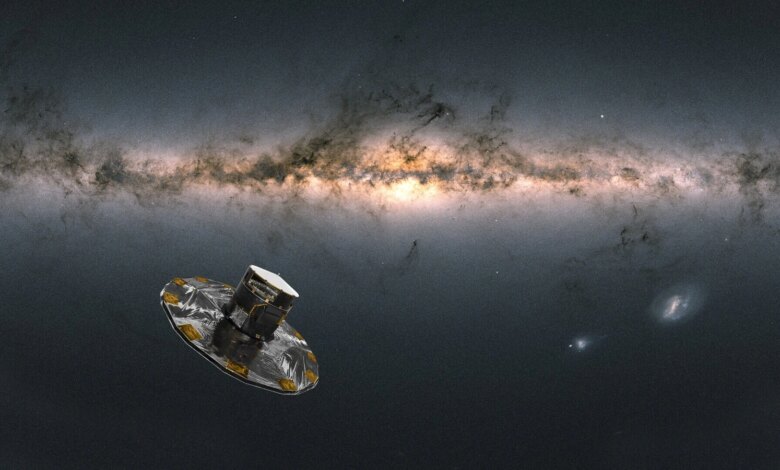Gaia to shed new light on the Milky Way, asteroids, stars and more today! Watch online ONLINE, know when and where

The European Space Agency and mission representative Gaia will release new data today revealing new insights into the Solar System, the Milky Way, asteroids and the wider cosmic neighborhood. Here’s the time and place to watch the event live online.
New data will be released by the European Space Agency (ESA) from the Gaia mission charting the Milky Way on Monday, June 13. “Join the European Space Agency and mission representatives Gaia on Monday, June 13 to preview the third big data release.This world-class treasure is set to reveal new insights into the Solar System, the Milky Way, asteroids and our wider cosmic neighborhood,” ESA said in a statement. It is known that the event can be watched live on ES Web TV from 8:00-9:00 UTC (10:00-11:00 CEST) i.e. 1:30pm -2:30pm IST.
Explaining what Gaia is, ESA said, “Gaia is ESA’s mission to create the most complete and accurate multi-dimensional map of the Milky Way. This allows astronomers to reconstruct the past and future evolution of our home galaxy over billions of years, a better understanding of stellar life cycles and our place in the Universe.” Also read: Jupiter’s composition reveals shocking truth! Here’s what the study says
What’s New in Gaia Data Release 3
Since Gaia’s launch in 2013, datasets have been released in 2016 and 2018 and a subset of a third dataset in 2020. These data releases contain stellar positions, distance, movement in the sky and color information, among others.
Gaia will release its third full dataset today, which will contain more and improved information about the nearly 2 billion objects in the Milky Way, mostly stars, and one subset of Solar System objects and extragalactic sources. These data were collected between July 25, 2014 and May 28, 2017.
New to this data set are the spectra of a significant number of objects, which can be used to determine luminosity, temperature, mass, and precise chemical composition. This release also includes the radial velocity of 33 million stars, a 5x increase over data release 2. Also read: Triumphant Space! Image of 4 brown dwarfs taken by a team of researchers
New in this dataset is the largest catalog of binary stars in the Milky Way, which is important for understanding stellar evolution. In addition, this release includes information about stars that change in brightness over time, Solar System objects such as asteroids and planets, and galaxies and quasars beyond the Milky Way.
Along with the new dataset, about fifty scientific papers will be published, of which nine are dedicated to demonstrating the potential of Gaia’s new data.
The 3 full data releases to be announced today will include: Largest Low-Resolution Spectroscopy Survey ever; Largest ever radial velocity survey; The largest ever collection of astrophysics data on stars in the Milky Way; For many variable star classes: the largest survey ever; The binary star survey surpasses all binary star work in the past two centuries; The most accurate survey of asteroids combining their composition with their orbits; First space-based full-sky survey of quasars and the shapes of galaxies in the Local Universe; Photometric Survey of the Andromeda Galaxy.




